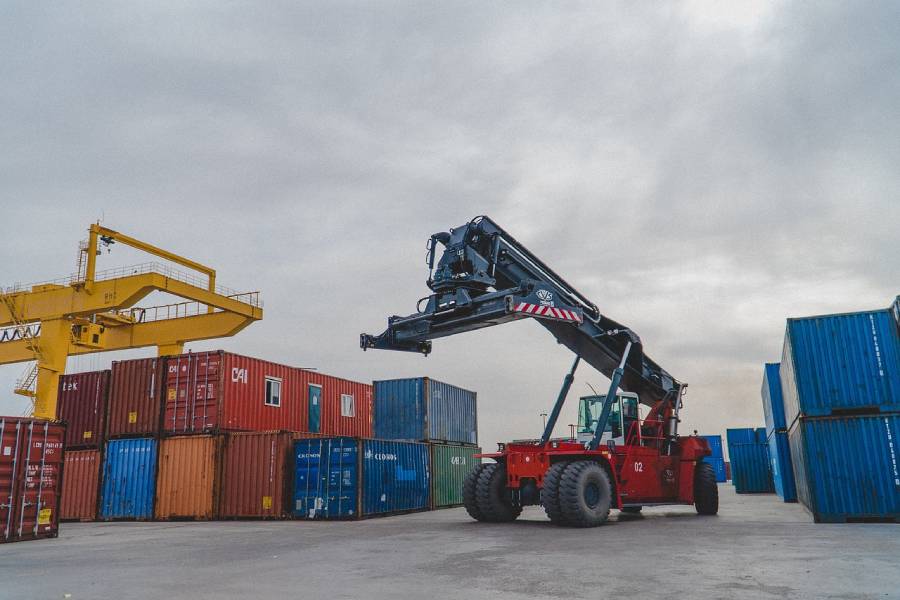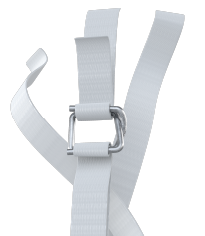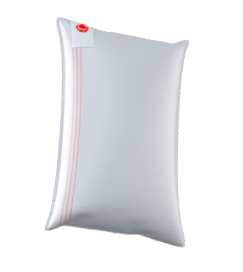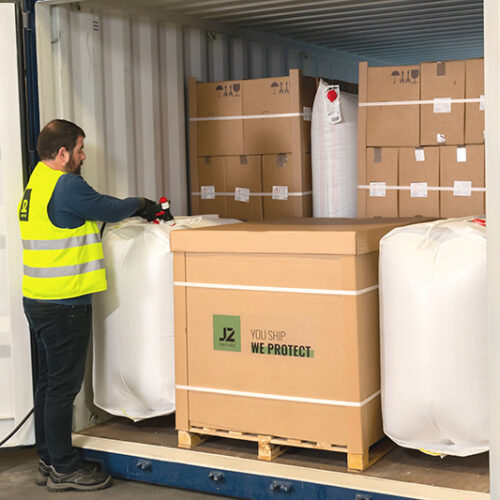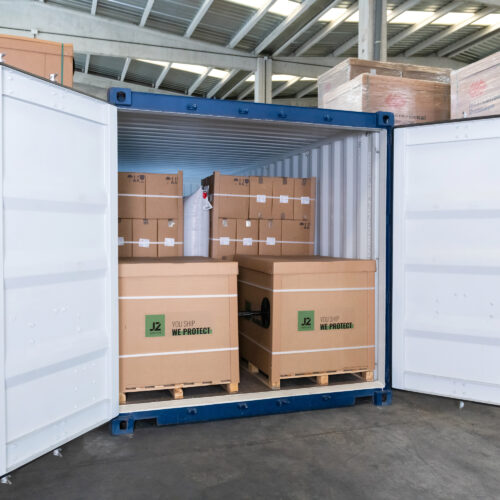Cargo stowage is a fundamental technique in the logistics and transportation field. It consists of properly organizing and securing goods inside a truck, container or any other means of transport. The main objective of cargo stowage is to maximize the available space, avoid damage to the cargo and provide adequate protection of goods, and ensure safety during transport.
In this article, we will discuss the keys to safe and efficient cargo stowage, stowage techniques to maximize space and avoid cargo damage, practical tips for stowing heavy and fragile cargo, safety rules for cargo stowage in trucks and containers, and the importance of proper weight distribution in cargo stowage.
Keys to safe and efficient cargo stowage
Cargo stowage requires planning and organization. Here are some keys to stow cargo safely and efficiently:
Knowing the weight and dimensions of the load: It is essential to know the weight and dimensions of the load before stowing it. This will allow determining the most appropriate way to organize the load and calculate the weight distribution.
Use appropriate equipment: It is important to have the right equipment for cargo stowage, such as lashing straps and lashing and securing systems, pallets in good condition, etc. These will secure the cargo efficiently and reduce the risk of damage during transport. This equipment will secure the cargo efficiently and reduce the risk of damage during transport.
Distribute the weight evenly: It is advisable to distribute the weight of the load evenly to ensure the stability of the truck or container. This is achieved by placing heavier loads in the center and lighter loads at the ends.
Securing cargo properly: Cargo must be secured efficiently to avoid damage and shifting during transport. It is recommended to use suitable lashings and fastenings for each type of cargo. If you have any doubts, you can always contact us.
Avoiding empty spaces: Attempts should be made to fill all empty spaces between cargoes to maximize space and prevent goods from moving during transport. This can be achieved by using different ways of protecting goods with padding, or inflatable container bags, among other methods.
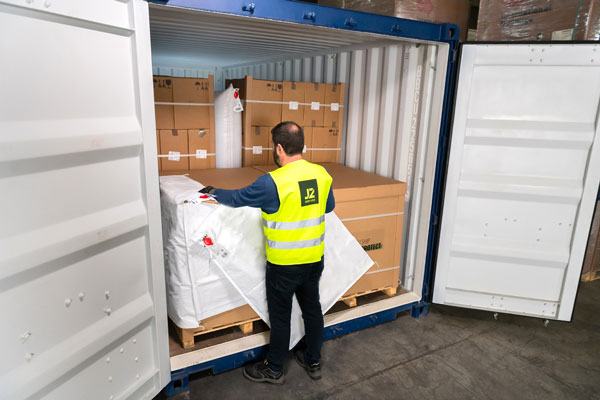
Stowage techniques to maximize space and avoid cargo damage
The use of proper stowage techniques will maximize available space and prevent cargo damage. The following are some fundamental stowage techniques:
Block stowage: Consists of stacking loads in an orderly manner, forming a compact and stable block, such as our Corfex ProStack double-height stowage system. This technique is used to maximize the available space and ensure the safety of the cargo.
Row stowage: Used when the load has an elongated shape, such as pipes or beams. It consists of placing the loads in a row, one behind the other, securing them properly to prevent movement during transport.
Layer stowage: It is used to stow loads of different heights. It consists of placing the loads in layers, securing each of them with straps or belts. This technique makes it possible to take advantage of vertical space and maintain the stability of the load.
Pyramid stowage: It is used to stow cone-shaped loads, such as sacks or drums. It consists of forming a pyramid-shaped structure with the loads, securing each layer properly to prevent shifting.
Practical tips for stowage of heavy and fragile loads
The stowage of heavy or fragile loads requires additional precautions. Here are some practical tips for stowing this type of cargo:
Use bracing: For heavy loads, it is recommended to use additional bracing, such as beams or supports, to ensure load stability.
Protect fragile cargo: Fragile cargo must be protected with special materials, such as inflatable bags, Niupacks, etc., or internally with bubble wrap or cardboard, to avoid breakage or shocks during transport.
Place heavy objects at the bottom: To avoid imbalance, heavy objects should be placed at the bottom of the load and properly secured.
Use padding: In the case of fragile cargo, it is recommended to use additional padding between the goods to avoid bumps and friction, as we have already seen.
In the case of dangerous goods, there are methods such as the Tygard gripping system, which is widely used to ensure additional protection.
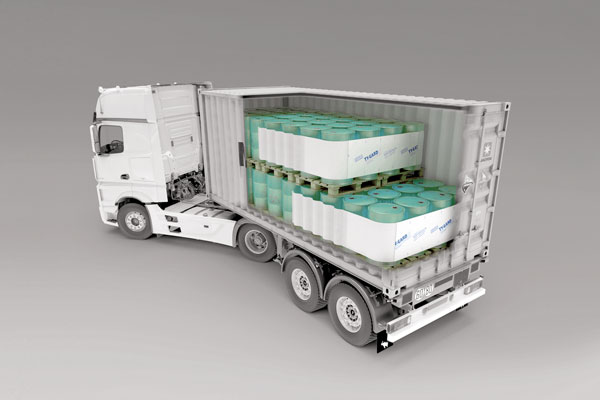
Safety standards for cargo stowage in trucks and containers
Cargo stowage must comply with certain safety standards to ensure the integrity of the cargo and the safety of the people involved in the transport. Some of the most important standards are the following:
Respect the load capacity of the truck or container: It is essential not to exceed the maximum load capacity established by the vehicle manufacturer, as this could compromise safety during transport. We have an article where we explain how to secure the cargo in a truck.
Properly secure cargo: Cargo must be properly secured using appropriate lashing and securing systems. These systems must comply with established safety and quality standards.
Comply with packaging standards: Cargo must be packed in accordance with established safety and quality standards. This includes the use of appropriate materials and the correct distribution of the cargo within the packaging. It is also important to check for damage to securing and lashing straps at stowage.
Respect signaling regulations: It is important to use proper signage to indicate that cargo is properly stowed and secured.
It is also important to use the stowage sheets, and in our case the European stowage sheets.
The importance of proper weight distribution in cargo stowage
Proper weight distribution in load stowage is essential to ensure vehicle stability and avoid accidents during transport. An unbalanced weight distribution can cause overturning, sliding or shifting of the load.
It is important to keep in mind that the center of gravity of the load must be as low as possible to ensure the stability of the vehicle. In addition, the load limits established by the vehicle manufacturer must be taken into account and respected at all times.
Conclusion
In short, load stowage is a fundamental technique in logistics and transportation. To stow loads safely and efficiently, it is important to know the weight and dimensions of the load, use appropriate equipment, distribute the weight evenly, secure the load properly and avoid empty spaces. In addition, different stowage techniques can be used, such as block, row, layer or pyramid stowage, depending on the type of cargo to be stowed.
For heavy or fragile cargo, additional precautions must be taken, such as using reinforcements, protecting fragile cargo, placing heavy objects on the bottom and using additional padding. In terms of safety regulations, the load capacity of the truck or container must be respected, the cargo must be properly secured, packaging regulations must be complied with, and appropriate signage must be used.
Finally, proper weight distribution is essential to ensure vehicle stability and avoid accidents during transport. Complying with these keys and recommendations will allow loads to be stowed safely, efficiently and maximizing the available space.

